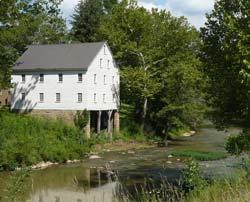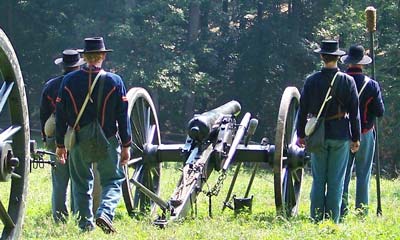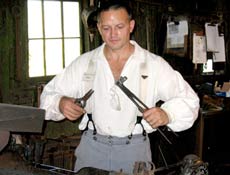Authors:
Historic Era:
Historic Theme:
Subject:
Spring 2011 | Volume 61, Issue 1


Authors:
Historic Era:
Historic Theme:
Subject:
Spring 2011 | Volume 61, Issue 1
By Louis Segesvary, Ph.D
Public Affairs Director • Appalachian Regional Commission

WVU’s Jackson’s Mill
Weston, WV
The Confederacy’s famous tactician, General “Stonewall” Jackson, grew up at his uncle’s West Virginia farm and grist mill, above, after his mother died. Today the Mill serves as an educational, arts, and 4-H center.
While material written about the Civil War could easily fill a library, relatively little of it focuses on the stories of noncombatants and how families, farms, and livelihoods fared during the conflict that ripped America’s social fabric apart between 1861 and 1865. And yet these stories of the home front, every bit as compelling as battlefield heroics and the actions of generals and presidents, are critical to understanding the war and its impact on our society. The attached Home Front Map Guide represents a new, fresh way of looking at the war by highlighting the Civil War home front. We invite you to use it to go back into time and experience this fascinating and often surprising history.
This map guide focuses on 150 destinations, one for each year that has passed since shots first rang out at Fort Sumter in April 1861. You won’t find battlefields here but rather a rich diversity of sites actively dedicated today to exploring the war’s social and technological history, from heritage farms, railroads, and restored homes to historic downtowns, national parks and memorials, and living history museums.

Mill Springs Battlefield
Mill Springs, KY
This strategic ferry-crossing on the Cumberland River became hotly contested during a fierce Civil War engagement in January 1862, a battle often reenacted today on the site, above. A visitor center contains exhibits on the battle.
At the Shields-Ethridge Farm in Jefferson, Georgia, Charity Shields endured the death of her husband and watched as her sons went off to fight. Left with little choice, the plucky farmwife continued to manage the 800-acre farmstead. Today, the farm is an 152-acre outdoor agricultural museum at which visitors can learn about 19th-century rural life with hands-on interpretive activities.
The declaration of war didn’t stop some state legislatures from continuing to deliberate on their role and authority. Three major political deliberations, for instance, occurred at Wheeling, West Virginia’s Independence Hall, which you can still visit today. During the first convention in the former Custom House in May 1861, delegates considered seceding from the Union. The June 1861 meeting considered and then implemented the formation of a new government with Virginia. The third and decisive constitutional convention in 1862 established West Virginia as its own state, which then seceded from the Confederacy.

Historic Roscoe Village
Coshocton, OH
A costumed interpreter demonstrates blacksmithing at living history museum of Historic Roscoe Village, a port site on the Ohio-Erie canal that provided crucial wheat supplies to the Union army during the Civil War.
Well behind the battle lines, factories on both sides operated at a furious pace, creating the raw materials, foodstuffs, clothes, and armaments that